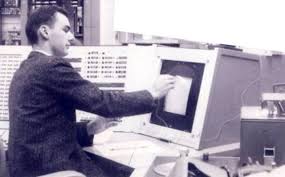In the swinging ’60s, a revolutionary idea started to take shape, born out of a need to conquer the challenges of communication during the Cold War. This idea, known as ARPANET, wasn’t just about connecting computers; it was a grand vision crafted by brilliant minds like J.C.R. Licklider, Bob Taylor, and Ivan Sutherland.
Imagine a time when the world faced the tension of the Cold War, and the concept of a decentralized communication network was more than just a dream—it was a necessity. That’s where ARPANET comes into play.
Paul Baran, a researcher at RAND Corporation, introduced a groundbreaking concept called packet switching. This wasn’t just a technical innovation; it was the key to resilient and efficient communication. Breaking down data into smaller packets became the secret sauce for ARPANET’s success.
Fast forward to the late ’60s, where Leonard Kleinrock and Lawrence Roberts played pivotal roles in turning this vision into reality. The first nodes, UCLA and the Stanford Research Institute, were linked in 1969, creating the very fabric of what would become a global digital community.
But it wasn’t just about connecting computers; it was about making them talk to each other. Enter the Interface Message Processor (IMP), the unsung hero designed by Bolt, Beranek, and Newman. This little powerhouse was the first packet switch, connecting nodes and allowing the magic of data exchange.
As the network grew, so did the need for common ground. The Network Control Program (NCP) and the adoption of TCP/IP protocols, championed by Vinton Cerf and Bob Kahn, became the common language of the internet, ensuring everyone spoke the same digital dialect.
Picture the gradual expansion of ARPANET, reaching more institutions and universities across the United States. This was the birth of a global digital village, connecting minds and ideas across vast distances.
ARPANET’s legacy? It goes beyond its military origins. It laid the bedrock for the internet, emphasizing principles like decentralized communication, fault tolerance, and interoperability—concepts that now define our digital world.
As ARPANET evolved, it became a playground for innovation. It tested new technologies, eventually leading to the internet we know today. The adoption of TCP/IP paved the way for the World Wide Web, transforming our lives in ways those early visionaries could only imagine.
So here’s to ARPANET, the unsung hero of the digital age. From its humble beginnings, a global revolution was sparked—one that would forever change the way we connect, share, and shape the future.

